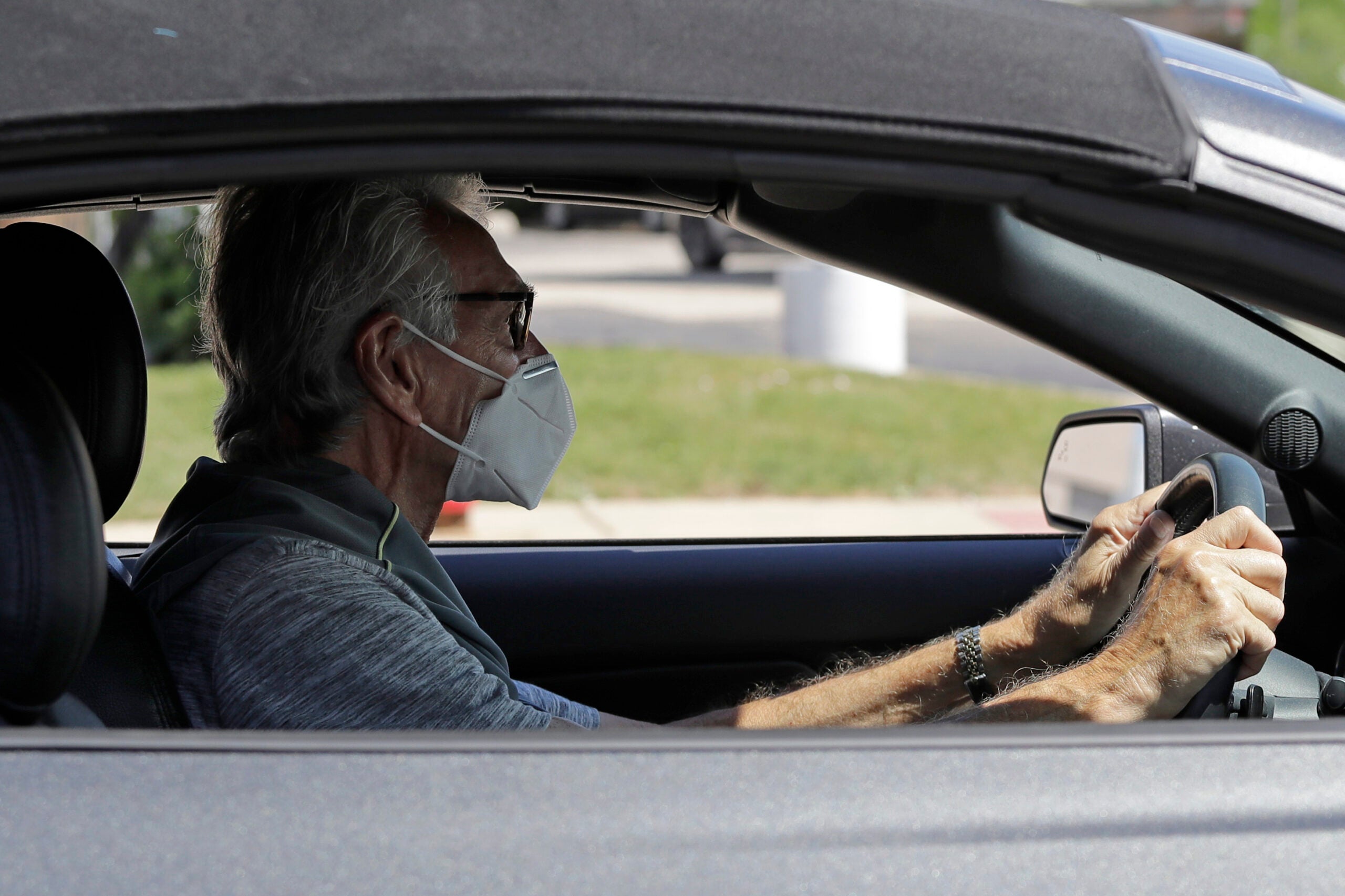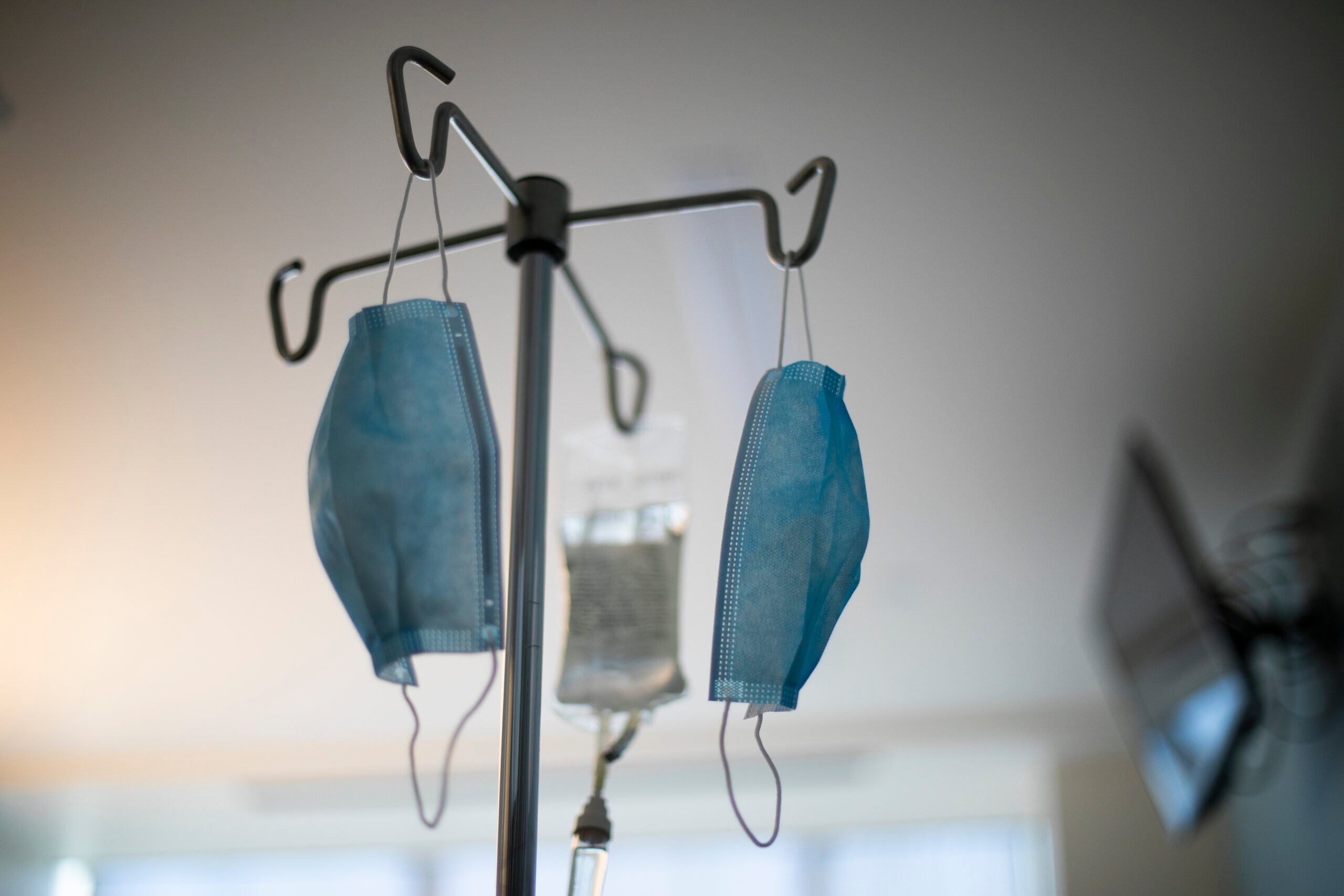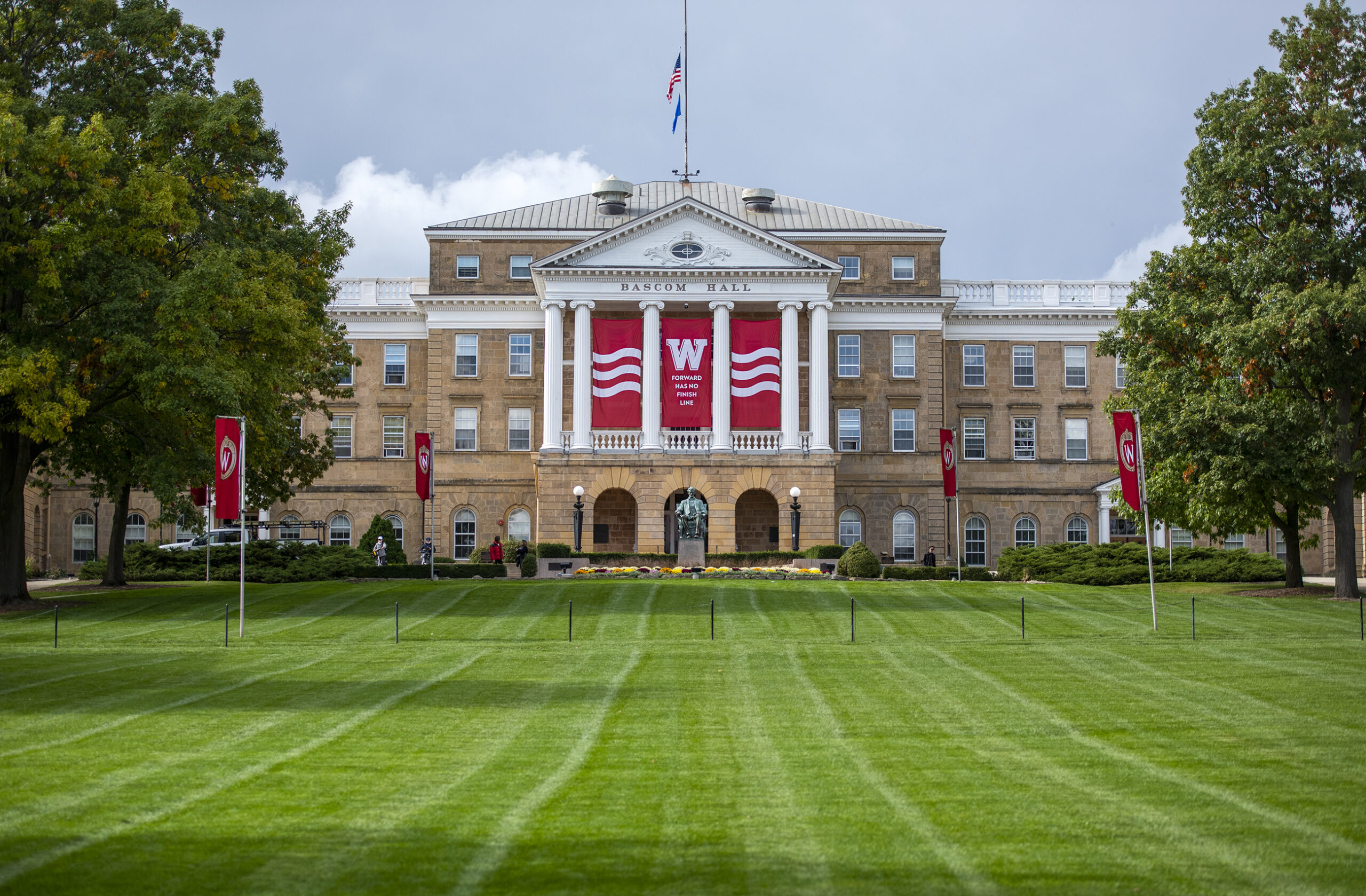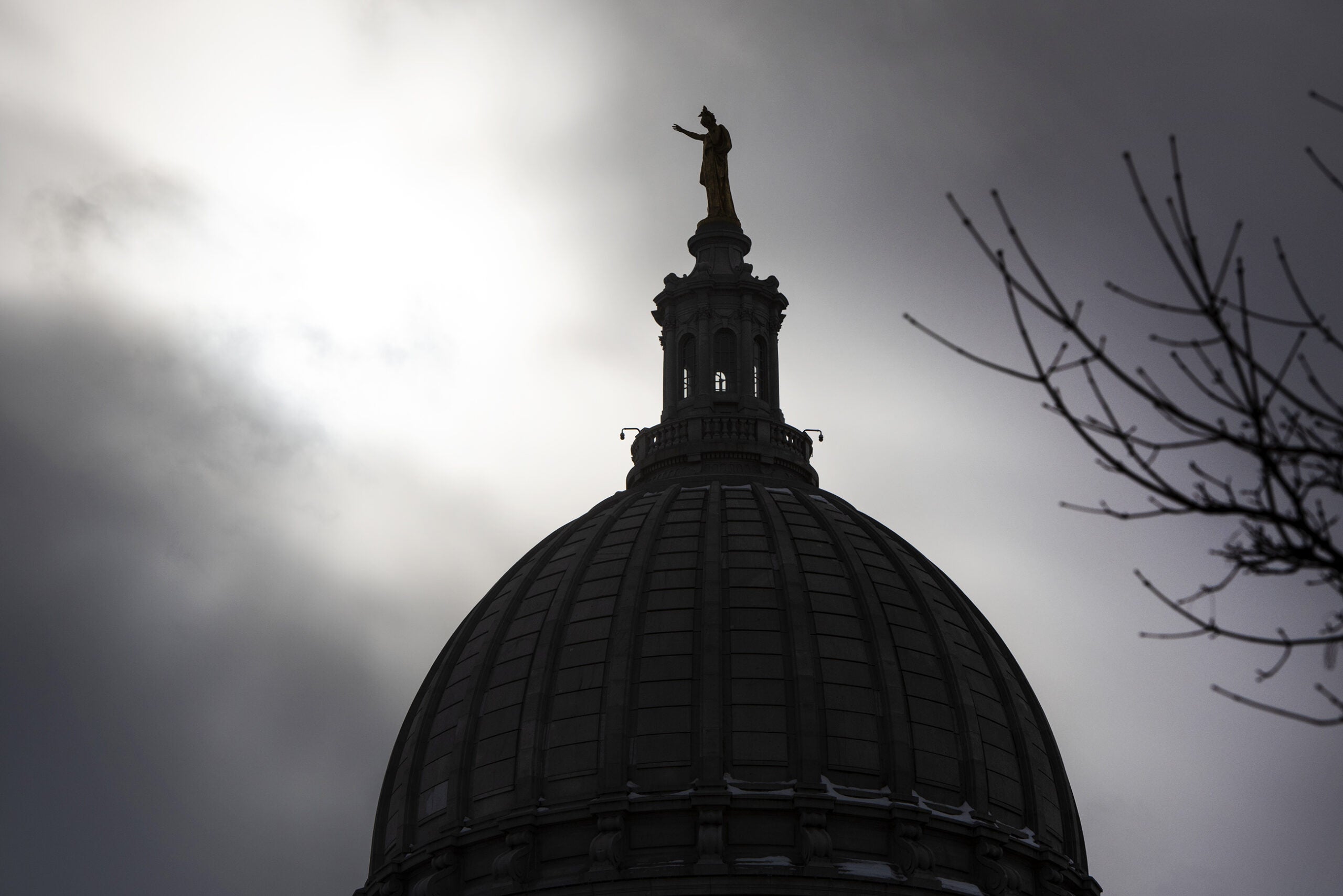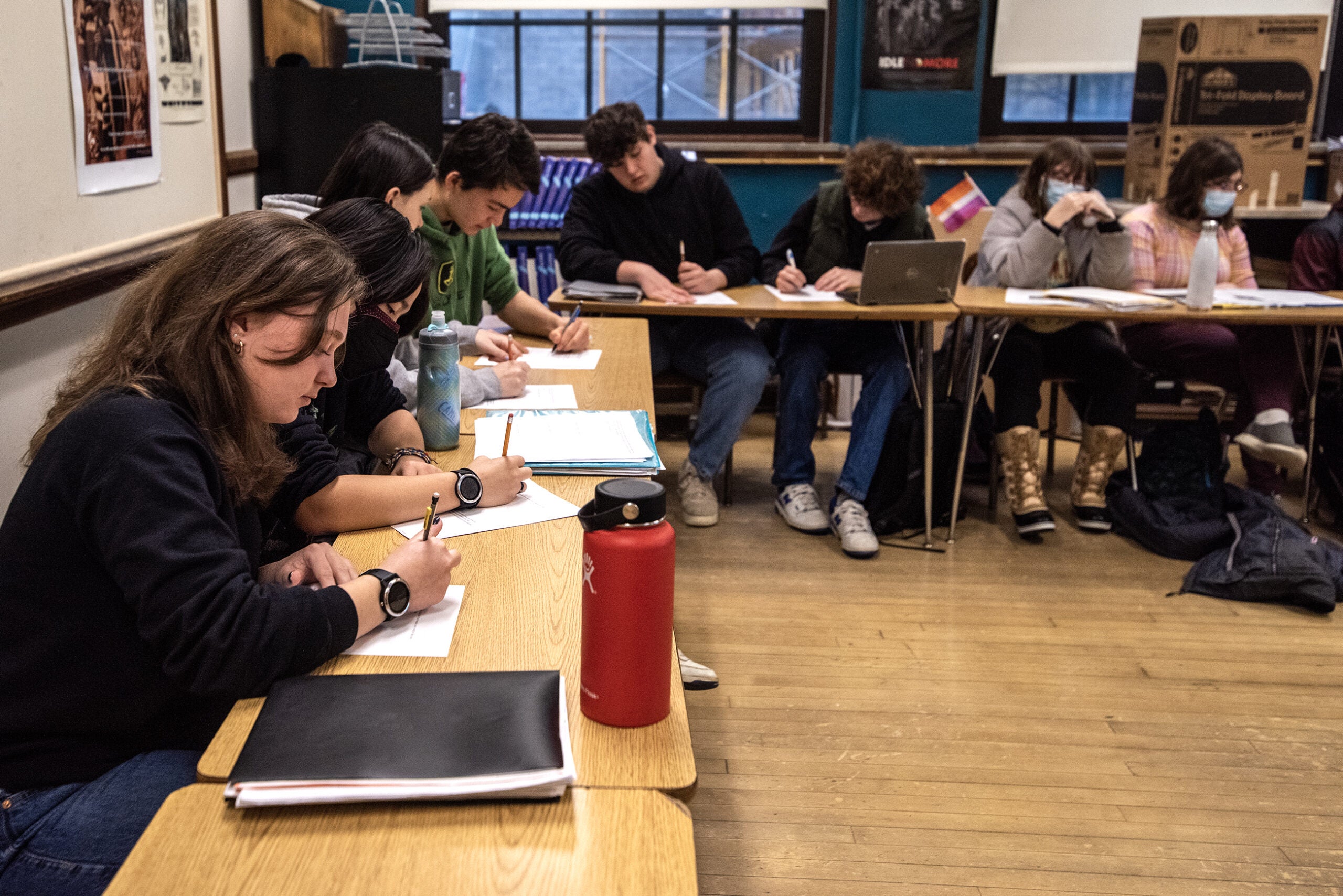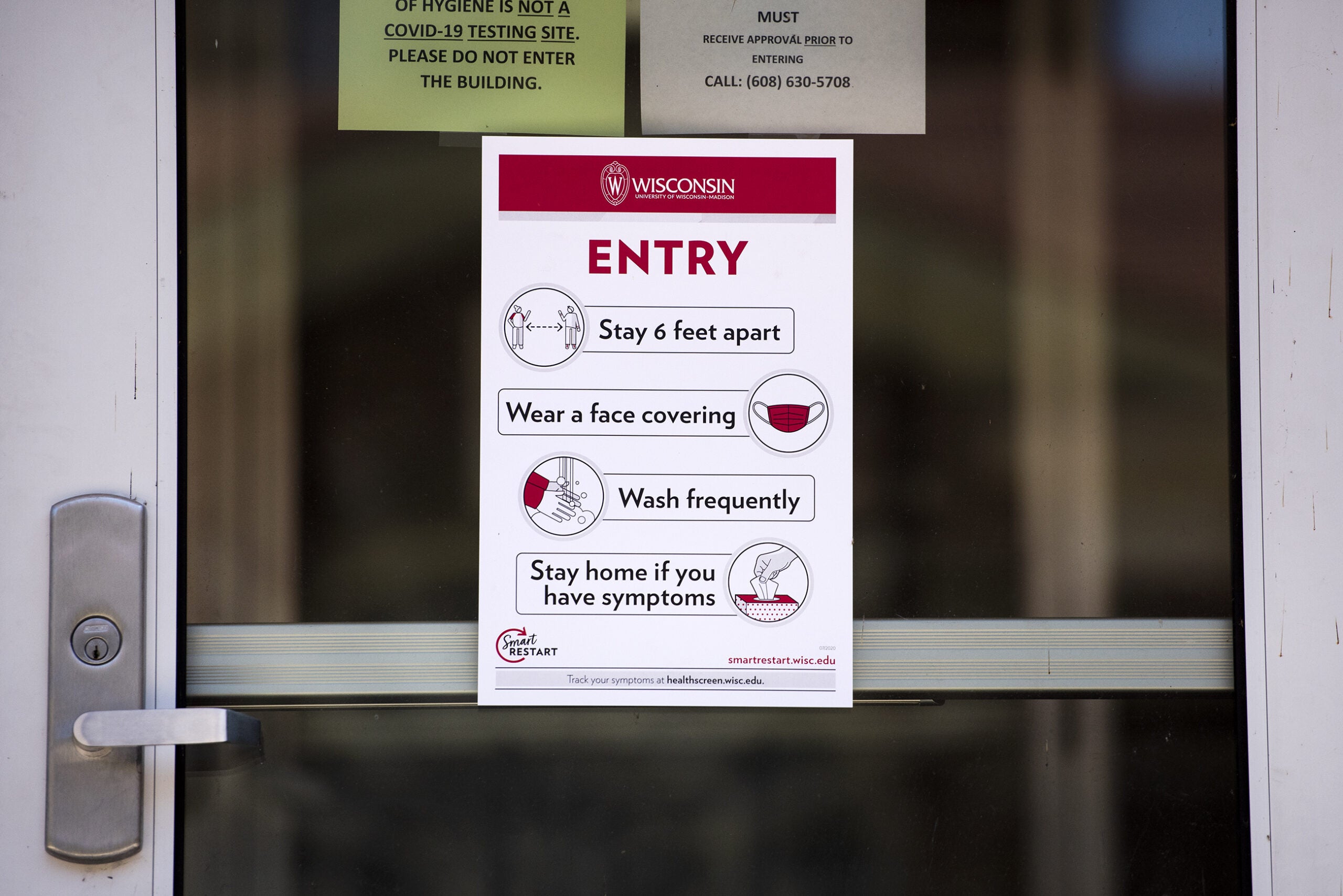As the pandemic tightens its grip and reaches into every corner of Wisconsin with ever-higher numbers of COVID-19 cases, hospitalizations and deaths, Gov. Tony Evers is asking people to stay home, and at least one county is urging employers to let staff work from home.
On Thursday, Dane County asked businesses to help reduce the spread of COVID-19 during a week when hospitalizations rose to their highest level during the pandemic, reaching 142 patients Monday.
“We’re always going to be encouraging remote work when feasible, but for those jobs where people have to go into work, we would like employers to look at their existing policies and look for ways to limit close contacts by maybe staggering shifts or limiting the number of people that are on each shift or opening additional spaces to prevent spread among workers,” said Bonnie Koenig with Public Health Madison-Dane County. She works with businesses to reduce the spread of COVID-19.
Stay informed on the latest news
Sign up for WPR’s email newsletter.
Gatherings, large and small, continue to be the biggest driver of infection, according to local and state officials. And despite pleas to stay home, people in Wisconsin appear to be traveling as much as they did before the pandemic.
Song Gao, a geography professor at the University of Wisconsin-Madison, has been aggregating cell phone data showing how far Wisconsinites are traveling each day.
“According to our tracking dashboard, overall mobility is already back to normal,” Gao said Thursday. “Also, the close contact (physical distancing) index has dramatically increased in September and October, which indicates more gatherings in the state.”
Gao began the project as a way to understand if residents were following the state’s “Safer At Home” order when it was in effect from the end of March to mid-May, before the state Supreme Court struck it down.
In April, Gao said residents’ mobility had been curtailed significantly, especially in urban areas like Dane and Milwaukee counties.
That was backed by genetic sequencing of COVID-19 cases in the two counties. Only 75 miles apart, there was little transmission of the disease between Madison and Milwaukee. Those findings come in a new study authored by Thomas Friedrich, a professor in the UW School of Veterinary Medicine, and was published Thursday in the journal Nature Communications.
By comparing different strains of the virus, researchers can tell where it’s spreading.
Whether there is spillover from campuses into surrounding communities is something Friedrich and David O’Connor, a professor at the UW School of Medicine and Public Health, are trying to find out.
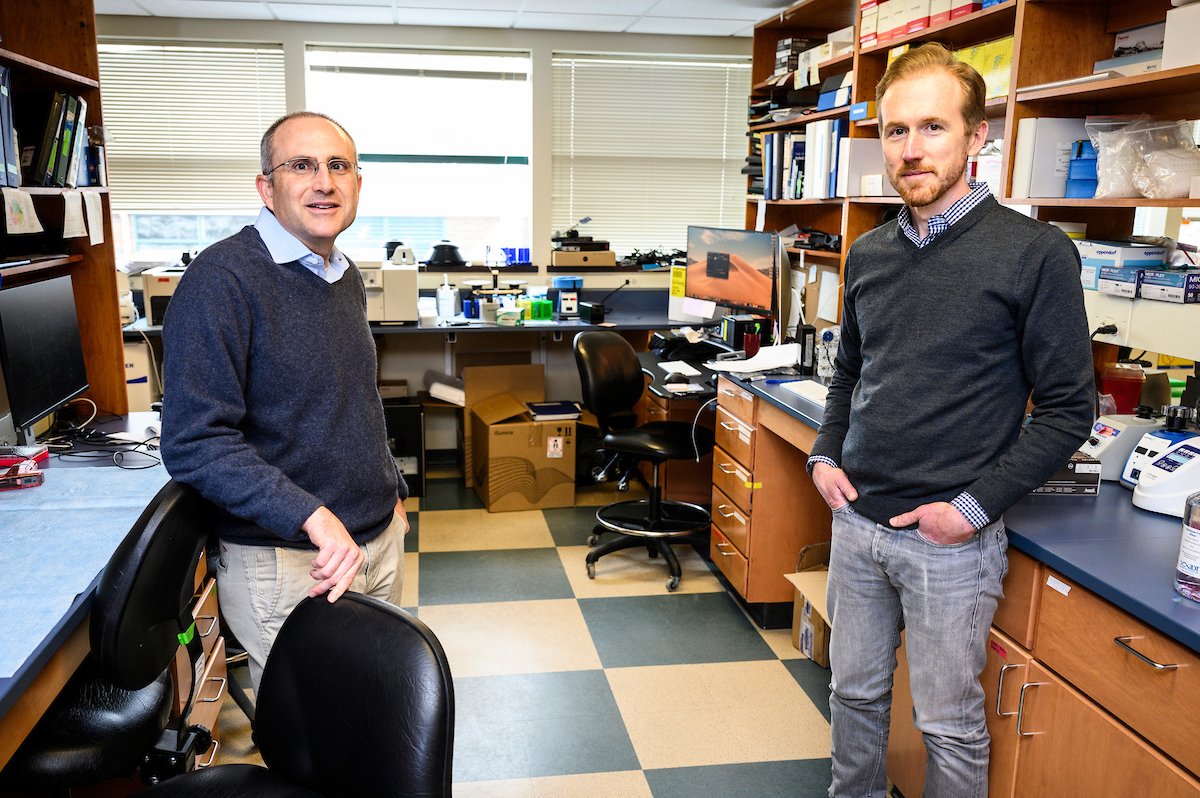
“We’re interested in knowing whether the viruses that are involved in these campus outbreaks — now that we’re six weeks out from the campus outbreak in Madison — do we find those viruses leaving their genetic signatures in people in the broader community? Do they find their way into nursing homes and hospitals.Or do they stay isolated on the campus?” said Friedrich.
Friedrich and O’Connor are doing a study on spillover for the Centers for Disease Control and Prevention along with researchers from the University of Michigan at Ann Arbor and UW-Milwaukee scientists.
A researcher in La Crosse has already linked positive coronavirus cases on nearby college campuses to nursing home infections and deaths.
That study, which has not been formally reviewed, looked at whether outbreaks at UW-La Crosse, Viterbo University and Western Technical College affected the larger community.
Wisconsin Public Radio, © Copyright 2024, Board of Regents of the University of Wisconsin System and Wisconsin Educational Communications Board.

